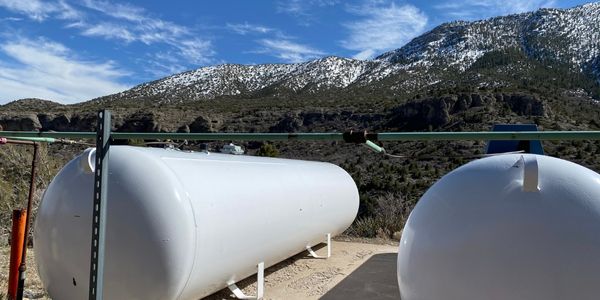Technology Category
- Functional Applications - Inventory Management Systems
- Platform as a Service (PaaS) - Application Development Platforms
Applicable Industries
- Finance & Insurance
- Marine & Shipping
Applicable Functions
- Sales & Marketing
- Warehouse & Inventory Management
Use Cases
- Inventory Management
- Picking, Sorting & Positioning
Services
- System Integration
About The Customer
Urth, formerly known as Gobe, is a mission-driven business that sells camera and art accessories. The company was founded following a road trip from California to Patagonia, which inspired the founders to create change by giving more people the opportunity to experience nature. Urth's products, grouped into the categories 'Art, Carry, and Camera,' help customers engage with nature. The company is committed to environmental sustainability, sourcing environmentally friendly products and materials, and offsetting all purchases against the carbon emissions they create. Urth also helps fund communities to plant trees. Today, Urth is a well-established ecommerce business with a focus on operations and finance.
The Challenge
Urth, a mission-driven camera and art accessories business, was facing significant operational challenges. Despite being a well-established ecommerce business, Urth was struggling with inventory management. They were using Magento, an ecommerce platform, for both ecommerce and inventory management. However, Magento was not designed to function as a full-fledged inventory management system. This issue was further complicated by the fact that Urth was running inventory out of Fulfillment By Amazon (FBA), and Magento and Amazon were not integrated. This led to several problems, including customers being able to place orders for items that were out of stock and limiting Urth's capacity for growth and expansion to new markets or sales channels. In 2020, Urth decided to move from Magento to Shopify and sought an inventory management system that integrated natively with Shopify and Amazon FBA.
The Solution
Urth engaged SMB Consultants to implement Cin7, an inventory management system that could integrate with Shopify and Amazon FBA. The implementation had to cater to international tax and compliance requirements, necessitating two instances of Cin7 for different regions, multiple sales channels, and fulfillment centers. SMB Consultants and Urth identified two key objectives for the implementation: an accurate inventory valuation and understanding of the cost of goods sold (COGS). With these objectives, automations were put in place to increase efficiency and ease of management. Cin7's powerful automations were implemented, reducing time spent on administrative work. Cin7's automation capability allowed Urth to ship their products to customers worldwide, with orders automatically routed to the appropriate FBA fulfillment location. SMB Consultants also set up a Cin7 automation with a Singapore-based 3PL warehousing facility called IMF to expand Urth's reach further.
Operational Impact
Quantitative Benefit

Case Study missing?
Start adding your own!
Register with your work email and create a new case study profile for your business.
Related Case Studies.

Case Study
Drill ship power challenge: hybrid solution solves distribution issues
Aspin Kemp & Associates (AKA), a manufacturer of electrical power and control systems headquartered in Montague, PEI, encountered one with its hybrid power initiative, the first hybrid drill floor destined for installation on ultra-deepwater drill ships operated by Transocean, Swiss offshore drilling contractors. Since on-site modification was impossible and scrap recycling of any modifications was unacceptable, the enclosures had to arrive ready-to-install.

Case Study
Real-time In-vehicle Monitoring
The telematic solution provides this vital premium-adjusting information. The solution also helps detect and deter vehicle or trailer theft – as soon as a theft occurs, monitoring personnel can alert the appropriate authorities, providing an exact location.“With more and more insurance companies and major fleet operators interested in monitoring driver behaviour on the grounds of road safety, efficient logistics and costs, the market for this type of device and associated e-business services is growing rapidly within Italy and the rest of Europe,” says Franco.“The insurance companies are especially interested in the pay-per-use and pay-as-you-drive applications while other organisations employ the technology for road user charging.”“One million vehicles in Italy currently carry such devices and forecasts indicate that the European market will increase tenfold by 2014.However, for our technology to work effectively, we needed a highly reliable wireless data network to carry the information between the vehicles and monitoring stations.”

Case Study
Safety First with Folksam
The competitiveness of the car insurance market is driving UBI growth as a means for insurance companies to differentiate their customer propositions as well as improving operational efficiency. An insurance model - usage-based insurance ("UBI") - offers possibilities for insurers to do more efficient market segmentation and accurate risk assessment and pricing. Insurers require an IoT solution for the purpose of data collection and performance analysis

Case Study
Ensures Tanker Safety and Emissions Compliance
Storage tanks are irregular in shape and a certain amount of mathematical modelling is required to get an accurate representation of volume and, more importantly, the weight of material in each tank. In addition, countries have different emission regulations, so the ships position needed to be accurately known in order to geotag emission data.

Case Study
Smooth Transition to Energy Savings
The building was equipped with four end-of-life Trane water cooled chillers, located in the basement. Johnson Controls installed four York water cooled centrifugal chillers with unit mounted variable speed drives and a total installed cooling capacity of 6,8 MW. Each chiller has a capacity of 1,6 MW (variable to 1.9MW depending upon condenser water temperatures). Johnson Controls needed to design the equipment in such way that it would fit the dimensional constraints of the existing plant area and plant access route but also the specific performance requirements of the client. Morgan Stanley required the chiller plant to match the building load profile, turn down to match the low load requirement when needed and provide an improvement in the Energy Efficiency Ratio across the entire operating range. Other requirements were a reduction in the chiller noise level to improve the working environment in the plant room and a wide operating envelope coupled with intelligent controls to allow possible variation in both flow rate and temperature. The latter was needed to leverage increased capacity from a reduced number of machines during the different installation phases and allow future enhancement to a variable primary flow system.

Case Study
Automated Pallet Labeling Solution for SPR Packaging
SPR Packaging, an American supplier of packaging solutions, was in search of an automated pallet labeling solution that could meet their immediate and future needs. They aimed to equip their lines with automatic printer applicators, but also required a solution that could interface with their accounting software. The challenge was to find a system that could read a 2D code on pallets at the stretch wrapper, track the pallet, and flag any pallets with unread barcodes for inspection. The pallets could be single or double stacked, and the system needed to be able to differentiate between the two. SPR Packaging sought a system integrator with extensive experience in advanced printing and tracking solutions to provide a complete traceability system.







